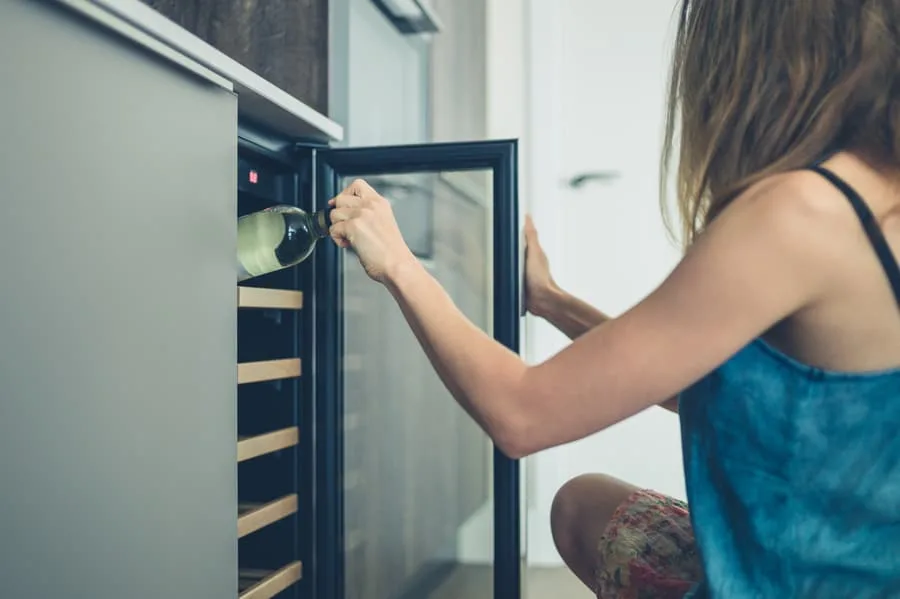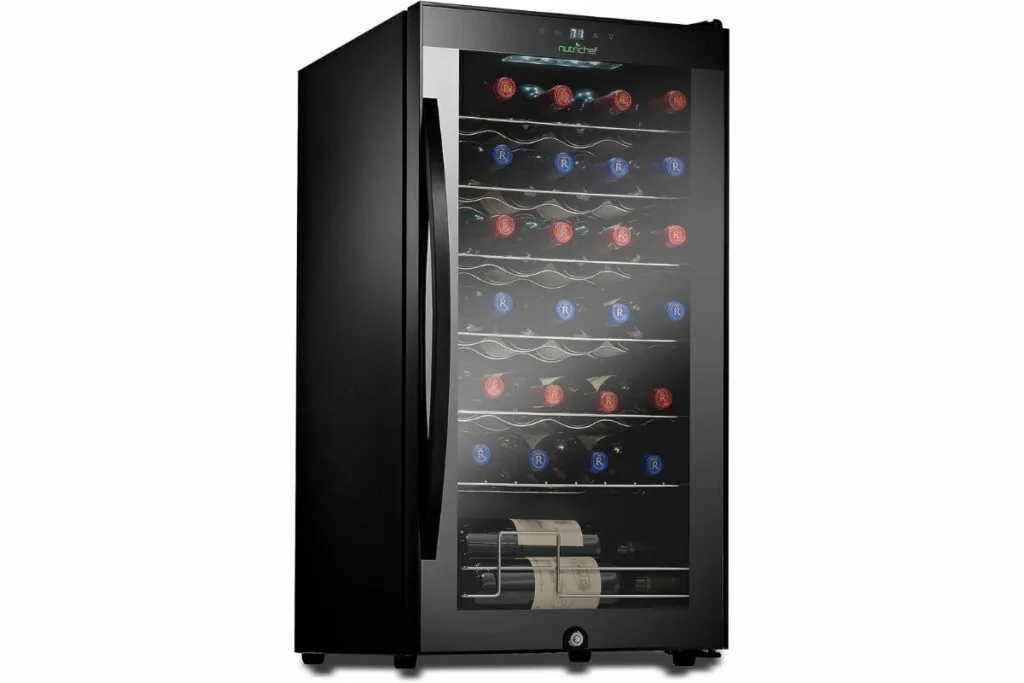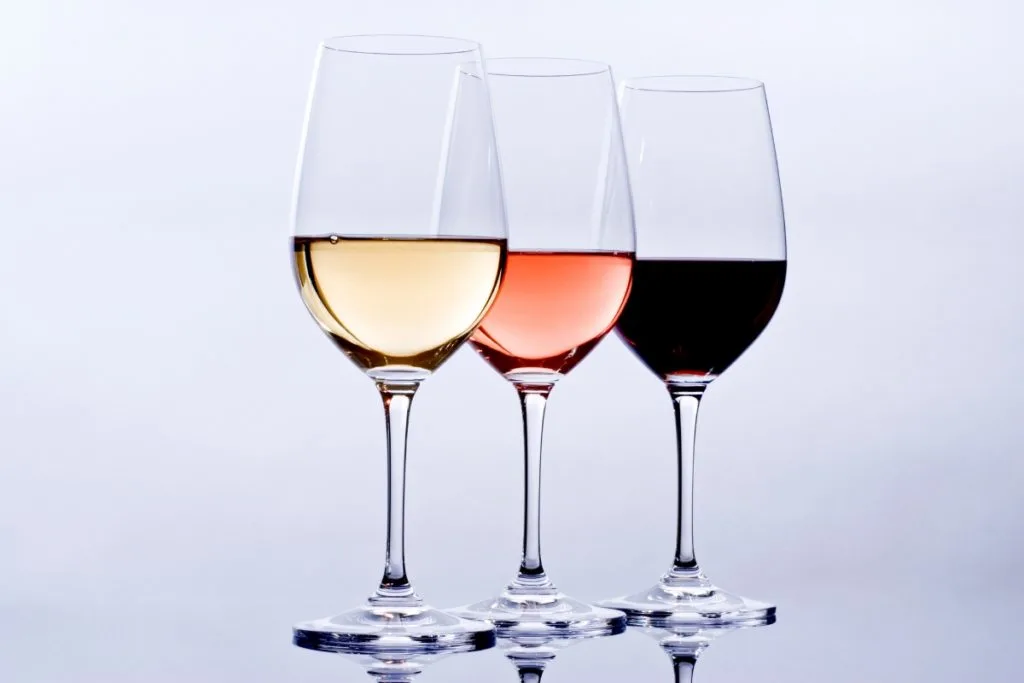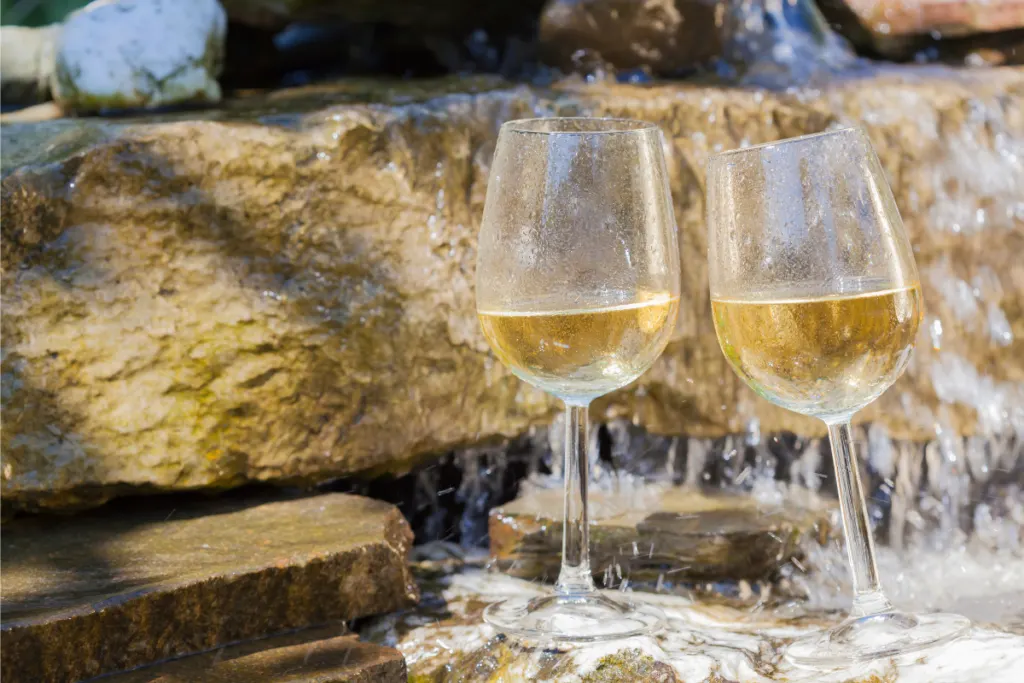As an Amazon Associate, I earn from qualifying purchases with no additional costs for you.
A wine refrigerator is a fantastic way to keep wine stored at the optimal temperature because a standard refrigerator is too cold for wine storage. Temperature impacts the flavor of all wines. Red wines run the risk of the fruit losing its flavor, and white wine can become too tart. The temperature also impacts the aroma of wine, which is an integral part of the experience of drinking wine.
How cold do wine refrigerators get? Wine refrigerators get as cold as 46 degrees Fahrenheit, but that does not mean wine needs to be kept at that temperature for long-term storage. Wine, excluding sparkling wines like Champagne, should be stored at roughly 55 degrees for the best long-term aging.
Just like wine, not all wine refrigerators are the same. Wine refrigerators will sometimes have one temperature setting, while others have duel zones. Some use traditional compressors, and others use thermoelectric cooling systems to chill wine.

TIP: If you want to check out the best refrigerator for wine storage, I recommend trying out the Avation (18 bottles) compressor refrigerator with Wi-fi smart app control cooling system. You can find this refrigerator by clicking here (Amazon link).
Elements of Storing Wine
When considering a wine refrigerator, it is essential to evaluate all the aspects involved. The considerations you should focus on when storing wine are:
- Temperature and temperature stability
- Humidity
- Light exposure
- Vibration exposure
TIP: If you are interested in buying a wine decanter, I recommend purchasing these two top-quality decanters:
- USBOQO Wine Decanter (check it out on Amazon & read customer reviews)
- Iceberg Wine Decanter (check it out on Amazon & read customer reviews)
Temperature and Temperature Stability
Different wines have different temperatures that lead to the optimal wine experience. Ideally, wine storage is between 53 degrees and 57 degrees Fahrenheit because wine does not fare well with high temperatures. Once the temperature of the wine refrigerator is set, it should not be changed.
According to research by C.E. Butzle et al., titled “Effects of heat exposure on wine quality during transport and storage,” high temperatures cause a chemical reaction in the wine bottle. It causes the wine to age quickly, changes how it tastes, and can even cause the wine to change colors.
TIP: Why are wine bottles green? Read this article for a surprising reason! Why are white wines in clear bottles? Find out here!
Humidity
Humidity is vital for the storage of wine because moisture helps the wine’s cork from shrinking or expanding. Usually, a wine needs humidity around 70% but not less than 50% and a wine cooler should have either excellent insulation to maintain humidity or a way to control the humidity manually.
If the cork becomes damaged, it can lead to air getting inside the bottle, which causes the wine to oxidize and become permanently damaged.
TIP: Are you interested in buying a wine stopper? We’ve personally tried and recommend buying one of these wine stoppers (Amazon links):
- The Original Vacu Vin Wine Saver: Our top choice. Very easy-to-use wine stopper/saver. You can enjoy a glass of fresh wine whenever you want without worrying about wasting any.
- EZBASICS Wine Saver: Great alternative to Original Vacu Vin Saver. This wine stopper keeps the flavor of wine for up to one week.
- Champagne Stopper by MiTBA: Wine stoppers for sparkling wines are different. This wine stopper seals your bottle and increases the pressure so your beverage’s bubbles won’t go to waste.
Light Exposure
Wine should be protected from light as much as possible. Many times, the glass used for the bottles themselves is insufficient for blocking ultraviolet (UV) light that damages wine.
UV light degrades wine and causes the wine to age quickly. Research conducted by Andy Hartley for a GlassRite project titled “The Effect of Ultraviolet Light on Wine Quality” highlights the impact of ultraviolet light on wine.
The light alters the taste and the smell of the wine, often within hours. This research illustrates the importance of wine refrigerators being equipped with UV-protected glass to minimize the damage of light.
Vibration Exposure
Vibrations cause a chemical reaction in stored wine, so the best storage practices involve eliminating movement as much as possible.
Red wines typically have sediment in the bottles that need to settle, and vibrations cause those sediments to stir. Also, movement speeds up the chemical reactions that cause a wine to age faster.
Research conducted by Hyun-Jung Chung et al. for the Journal of Food Composition and Analysis titled “Effect of vibration and storage on some physicochemical properties of commercial red wine” discovered changes in acids and tannins with wines that were allowed to vibrate during storage.
Wine refrigerators have different ways of cooling, which leads to varying levels of vibrations. Typically, the traditional method of using a compressor to cool causes too many vibrations. However, thermoelectric wine coolers have an advantage because they create fewer vibrations.
Recommendation box: Everything you need to enjoy your wine as much as possible. All recommended products are personally tested and regularly used by experts from this website (Amazon links):
> Ivation Wine Cooler – Energy-efficient wine cooler for 18 bottles with Wi-fi smart app control cooling system.
> Wine Rack – Beautiful, elegant wood rack for up to 7 bottles and the choice of vertical or horizontal storage.
> Durand Wine Opener – Classic vintage wine opener (we like all these classic staff).
> YouYah Iceberg Wine Decanter – The most beautiful and handy wine decanter we personally use.
> Bormioli Rocco Wine Glasses – A set of eight elegant and traditional wine glasses made in Italy.
> Vintorio Wine Aerator – Simple but really useful wine aerator for a reasonable price.
> The Original Vacu Vin Wine Saver – The best wine saver on the market in a package with two vacuum stoppers and two wine servers.
And if you want to become a true connoisseur of wine, we recommend reading the book Wine Folly: The Essential Guide to Wine (Amazon link), where you will find all the information you need about winemaking, wine varieties, flavors, and much more.
Best Inexpensive Wine Refrigerator

There are a ton of great wine fridges on the market, but for my money, this 15 Bottle refrigerator by NutriChef (link to Amazon to read customer reviews) is in a class all its own. It is a quiet wine refrigerator crafted beautifully with stainless steel for a great classic look. It is ideal for storing red and white wine as well as Champagne and other sparkling drinks long-term.
It has a sleek compact design and fits well in a variety of in-home locations. It has earned tremendous reviews from wine drinkers who now own this fridge. It can also be great for storing beer and some approved food items safely. Click here to check this great wine cooler out on Amazon and see how much you can save.
TIP: Check out this helpful guide to learn which wine coolers are the best for Champagne and sparkling wines. For a guide to the best wine refrigerators that can also be used for aging cheese, check out this great article.
Storing Wines at Different Temperatures
Red and white wines do not have specific differences in storage temperatures, and they can be stored together at 55 degrees for long-term storage.
If wines are meant to be consumed quickly, or in less than six months of storing, it is a popular option to store the wine in temperatures closer to their proper serving temperatures.
TIP: This complete guide discusses the best methods to store red wines. Find out whether popular storage myths are true or false in this article!
Difference Between Serving Temperature and Storing Temperature of Wine

When wine is served at the optimal serving temperature for its type, it brings out the intended flavor. The temperature best for serving wine is different than the recommended temperatures for storing it.
When you pull a bottle of wine from the wine refrigerator, it may not be at the ideal temperature for enjoying right away, especially if the red and the white wines are stored in the same refrigerator.
Your red wines may need to warm up a few degrees, whereas your white wines might a few minutes to chill to reach the right temperature.
For serving purposes, the best temperature is different depending on the wine. For some wines, the alcohol taste is very apparent when it is served too warm. For other wines, the warmer temperatures are just right to allow the tannins to breathe and all the flavors to be balanced.
Interestingly, room temperature for red wine is closer to 60 degrees than 70 degrees, despite popular thinking. The following chart outlines the optimal serving temperature for various types of wine:
| Types of Wine | Optimal Serving Temperature in F° |
|---|---|
| Sparkling Wine | 45 degrees |
| Pinot Grigio | 45 degrees |
| Rose’ | 45 degrees |
| Sauvignon Blanc | 45 degrees |
| Chardonnay | 50-55 degrees |
| Pinot Noir | 55-60 degrees |
| Port | 55-60 degrees |
| Cabernet Sauvignon | 55-60 degrees |
| Merlot | 60-65 degrees |
| Malbec | 60-65 degrees |
| Zinfandel | 60-65 degrees |
How Different Does Wine Taste When Served at the Right Temperature?
The balance of the wine is at the mercy of temperature. Each wine has different elements of flavor, including sweet, sour, and bitter, and the balance of these elements rests on the temperature when it is consumed.
For instance, if white wine is served too cold, it can hide the delicate flavors of the white wine but bring out the acidity at the same time.
If the wine is allowed to warm up and be served at a properly chilled temperature, the flavors are in balance. If white wine is stored in a wine refrigerator at 55 degrees, it can be chilled for a few minutes in ice or a refrigerator before serving.
Red wine should be served closer to 60 degrees. If it is too warm, the alcohol will be more apparent, and the aromas and flavors of the red wine will be diminished. If the wine is coming directly from a 55-degree wine refrigerator, the wine will need to warm up only a few degrees.
If the wine has been on the counter or is fresh from the store, it is helpful to chill the wine for a few minutes in a standard refrigerator to achieve the optimal temperature before serving.
TIP: For a complete article on if wine fridges are necessary for proper long-term wine storage, check out this helpful article. Do you know the difference between a wine cooler and a wine refrigerator? Find out here!
Different Zones of a Wine Refrigerator

For those who enjoy a variety of different wines, a dual-zone wine refrigerator is ideal. A dual-zone wine refrigerator allows users to have two areas with separate temperature settings, which is a perfect setup for red and white wines.
If it is necessary to store wines all together in the same wine refrigerator, store the red wines on the top shelves. It may only be a few degrees warmer compared to the bottom, but it will help.
TIP: Most wines go bad once you pop the cork within a day or so. But a Coravin Wine Preservation system (available for a great price on Amazon) can extend the life of your opened wine for weeks or even months. It is awesome. You should check it out to see if it fits your lifestyle.
Enjoy Your Wine Experience
Wine is meant to be enjoyed and savored, and a wine refrigerator is an ideal option for the short and long-term storage of wine. A wine refrigerator allows for the control of the elements that impact wine.
Keeping wine at a consistent temperature free from UV light and vibration is ideal. Also, having control of the humidity level means the cork won’t dry out, leaving the wine susceptible to oxidization from air exposure.
TIP: Check out this page for a complete list of wine products and accessories I love. You’ll find my recommendations for wine refrigerators, decanters, and aerators and the best place to buy wine online. Click here to see the complete listing.
